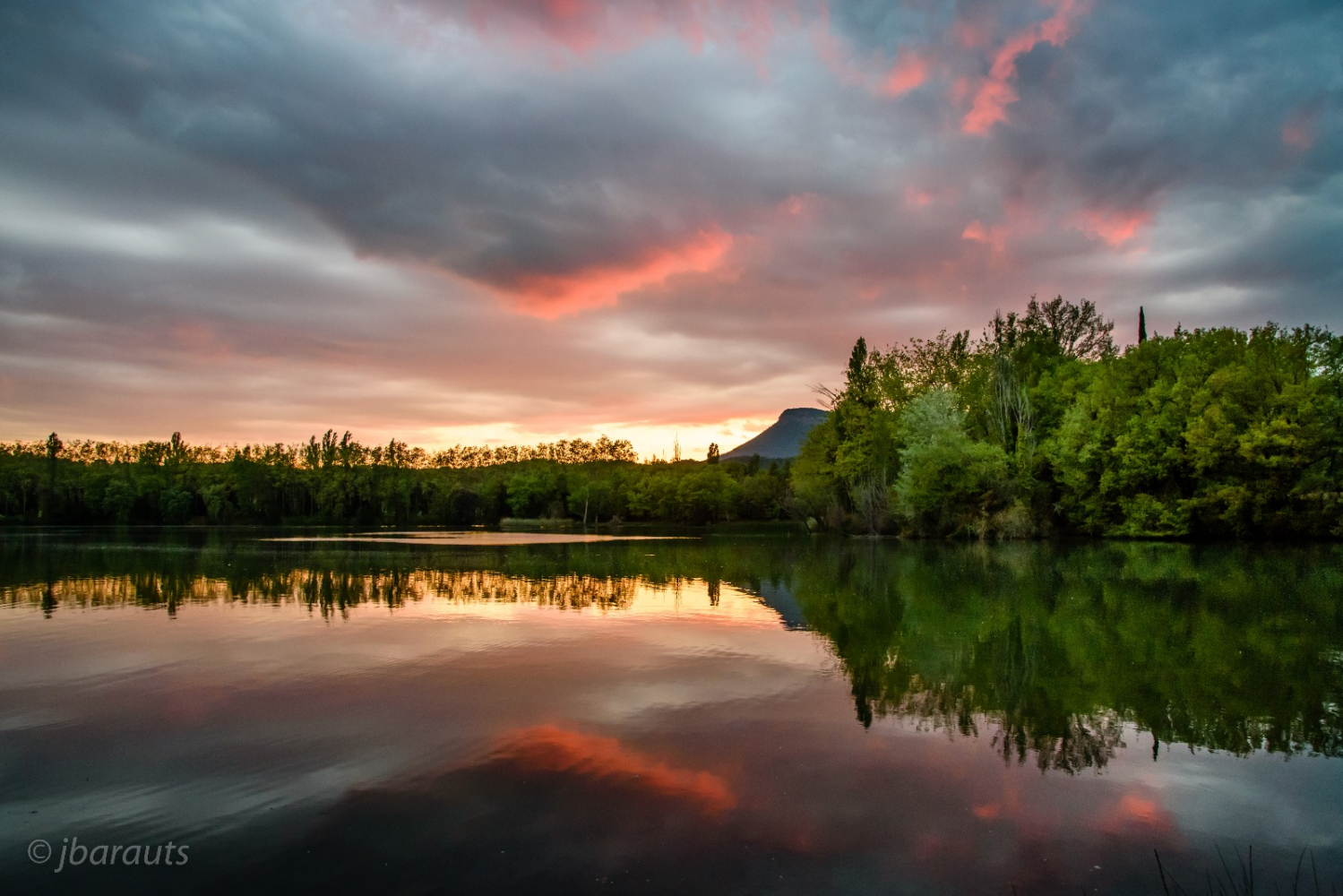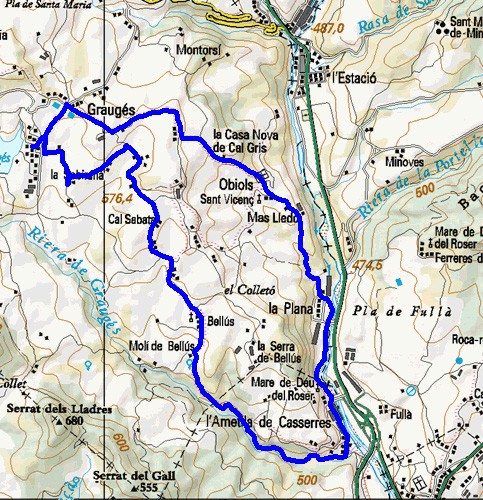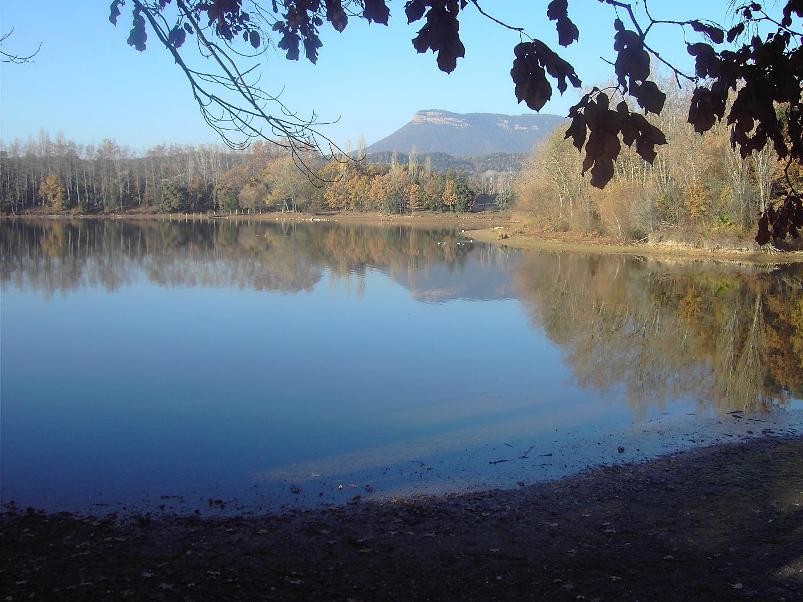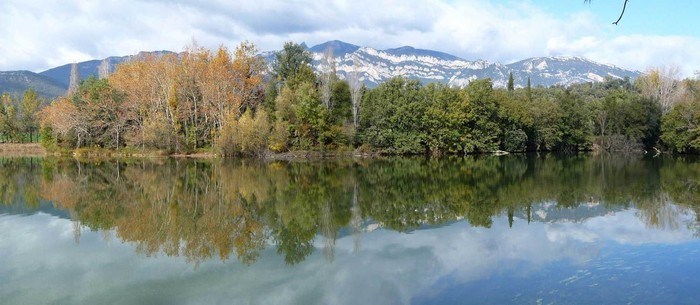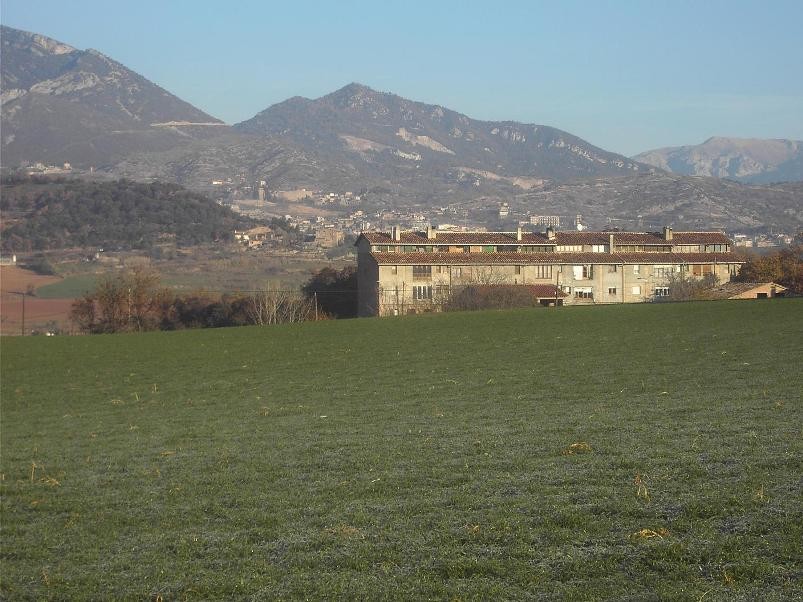

Circular route to the agricultural colony of Graugés
This circular route allows you to discover the agricultural colony of Graugés, a unique and unique colony because it is not a textile colony like the rest of the colonies of the territory around the Llobregat. You can visit its artificial pond, built between 1900 and 1909, which despite its anthropic origin, has become one of the main wetlands in the upper Llobregat basin.
Along the way you will pass the Pre-Romanesque church of Obiols (9th-12th centuries), several farms and farms that still modulate the agricultural landscape of the area, as well as two textile colonies, the Plana and l'Ametlla de Casserres of the river Llobregat.
Description
The tour begins at the Plaza de la Colonia de la Plana. This textile colony only keeps the workers' apartment blocks standing. The old factory was demolished after a major fire in 1999 that relocated to the nearby village of Casserres. Follow the signs for the Llobregat road (GR 270) towards Obiols, leaving the colony to the north. The track is rising and the views over the Llobregat valley and the first mountain ranges to the north are becoming more visible. Follow the main track until you reach the church of Sant Vicenç d'Obiols and the surrounding area with Mas Obiols, the Rectory, the cemetery and the necropolis, as well as other isolated elements: a tub, the fountain Obiols, the Pedró cross, a shed and the holes of the medieval watchtower. The date of consecration of the church is unknown, but it must be earlier than 888, when Count Guifré donated the church to the monastery of Ripoll. The holes you've probably noticed around the church are the 18th-century anthropomorphic tombs. X excavated on the rock.
When resuming the march, you must leave the GR 270 and continue on the track towards Graugés (GR 1). You will pass the houses of Cal Gris, farms and just after the house of La Roca you will find a fork in paths. You are in front of Calle del Mig, the first block of flats in the agricultural colony, a typical industrial colony building that looks out of place surrounded by fields. To reach the lake, follow the tarmac road to the north. You will soon reach the roundabout in Graugés, just in front of the Casavella de Graugés, a building of medieval origin that has undergone various extensions over time, and is currently in a fairly decadent state. Here is also the small lake, a small pond that feeds the large lake you are headed to. To the right you have Carrer Vell, but you must continue to the left below the small lake and following the edge of the road to Casserres.
After the last chalet, you will find access to the nucleus of the Agricultural Colony. Enter it, and you will reach the central square where there is a restaurant and access to Lake Graugés. Once you get here it is time to take a bin break and visit the lake environment. There is a roundabout on the lake but at present it cannot be turned around, so you have to turn and return along the same path. It is a charming place, very nice.
To continue the route, you have to redo the road to the road, and follow it a few meters to the right, until the first asphalted track that goes to the left towards Carrer Nou. Follow it to the Sovereign. Here you are on the right Carrer Nou, but the route continues to the left towards Cal Climent and you will soon be behind the Carrer del Mig - a little further south where you have been before.
Continue here the tarmac road to the right and you will pass Cal Vilardaga, Cal Sabata, Cal Solà and La Pineda, until you reach another important junction of paths where you have to continue south, in the direction of the large farmhouse that you will see from. here, Bellús. If you continued to the left towards Colletó you could return again for Obiols. When you pass by Bellús you will immediately see that this is one of the largest farmhouses in the area, in fact until the beginning of the twentieth century it was one of the most important houses and most producing in Avià. He got to build several farmhouses and the mill near the house. The first documentary reference is from 1497, and as it has been customary in these houses over the centuries, it has had different stages of construction and extension. Inside it has a small chapel of the s. XVIII.
At the next fork, you can access the Bellús Mill if you deviate from the route on the right; in rainy weather there is usually a very photogenic waterfall. The route but continues to the left, along the main track, the descent will soon become steeper. After crossing the Clot de la Serra, leave the track and continue on the path on the right that goes down between the vegetation until you reach the foot of the creek. As usual, these streams are renamed according to the section: de Graugés, de Bellús, and here they are called the streams of the Febres.
Once down the path widens and widens to continue touching the creek until you reach the core of the other textile colony where you will pass, l'Ametlla de Casserres (also called Monegal Colony). Just before the first houses, you will connect again with the Llobregat path (and route of the Textile Colonies), upstream. Cross the main street where the floors are and walk past the factory now recycling paper. You will notice its characteristic odor. As usual in the colonies you can see the imposing Torre del Amo, which looks almost like a castle from where the whole colony was controlled. After crossing the factory, continue upstream on a path near the canal and the dam. We cross the gates that formerly closed the colony and we come back to La Plana. To avoid crossing the entire industrial estate in the middle, a path allows you to cross near the river Llobregat and make the crossing more pleasant. You pass under the entrance bridge of the colony and near the remains of the old factory, where it is already linked to one of the streets and following it up, you return to the starting point of the route.
Technical sheet
Route number: 61
Town: Avià
Type: Easy
Distance: 10,5 km.
Time: 3 h.
maximum altitude: 614 m
height difference: 200 m
To organise
Cartography: 5-Berga. 1:25.000 Institut Cartogràfic i Geològic de Catalunya
More information
Bibliography: Inventari de Patrimoni: patrimonicultural.diba.cat
Documents and links
OFICINA DE TURISME DEL BERGUEDÀ
Carretera C16 Km 96
08600-Berga. Phone (+34) 654 125 696
Monday to Friday: 9 to 14h.
Saturday: 10 to 14 & 16 to 18h.
Sunday and holidays: 10 to 14h.
E-mail: turisme@elbergueda.cat
[Premsa]
Other

 English
English Follow us
Follow us







![[Tancar]](/plantilles/bergueda/img/tancar.png)
